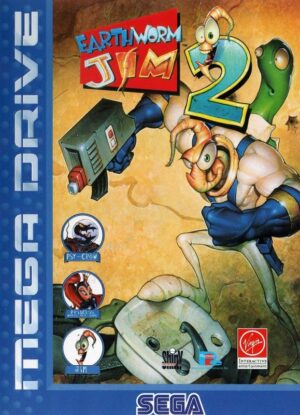Retro Replay Review
Gameplay
Colossal Cave takes the foundational mechanics of Crowther and Woods’ original text adventure and translates them into a point-and-click format that’s accessible for modern audiences. Instead of typing commands, players navigate through hyperlinked text and directional icons, making exploration as simple as clicking arrows or highlighted words. This design choice streamlines the experience, removing the need for detailed parser commands and allowing newcomers to focus on the puzzle-solving and treasure-hunting aspects.
(HEY YOU!! We hope you enjoy! We try not to run ads. So basically, this is a very expensive hobby running this site. Please consider joining us for updates, forums, and more. Network w/ us to make some cash or friends while retro gaming, and you can win some free retro games for posting. Okay, carry on 👍)
One of the most notable departures from the classic experience is the elimination of inventory juggling. Gone are the days of tediously combining items in your virtual backpack; instead, nine magical words can be used contextually at specific locations to trigger events. This simplification reduces micromanagement but also reshapes traditional puzzle structures, favoring situational magic-word usage over conventional item-based solutions. It’s a choice that speeds up gameplay while retaining the delight of discovering the right word at the right time.
Despite its streamlined format, Colossal Cave preserves a hint of unpredictability through a small degree of randomization. Certain treasures may appear in different rooms on each playthrough, and the behavior of some characters can vary slightly. This injects fresh tension into each session, ensuring that even veterans of the original Adventure can’t completely predict every outcome. Overall, the gameplay strikes a balance between casual point-and-click navigation and the intellectual challenge of a classic text-based puzzle game.
Graphics
True to its lineage, Colossal Cave eschews detailed visuals in favor of minimalistic design. The main interface consists of hyperlinked text passages, icons for navigation, and occasional simple illustrations to hint at your surroundings. While this sparse aesthetic may feel anachronistic compared to modern graphically-rich titles, it carries a nostalgic charm that underscores the game’s roots in early computing history.
The clickable directional arrows and highlighted magic words are integrated seamlessly into the text window, creating an intuitive user interface that feels both retro and functional. There’s no 3D rendering or high-resolution textures, but the crisp typography and clear layout make reading and decision-making a pleasure. For players seeking flash and spectacle, the graphics will likely feel underwhelming—but for those who appreciate clean design and focused interaction, it’s an elegant solution.
On early web browsers, Colossal Cave’s lightweight approach shines. It loads quickly, responds instantly to clicks, and never demands high system resources. This makes it ideal for play in short bursts or on older hardware, and it keeps the spotlight firmly on exploration and puzzle-solving rather than eye candy. In sum, the graphics are intentionally modest, serving the gameplay rather than competing with it.
Story
At its heart, Colossal Cave is a treasure-hunting narrative set within a sprawling underground labyrinth. You assume the role of an intrepid explorer, delving into winding passages, hidden chambers, and perilous obstacles to recover stolen riches. The storyline unfolds largely through environmental descriptions and the occasional cryptic hint—there’s no spoken dialogue or elaborate cutscenes, but each location feels richly imagined through prose alone.
Many of the original Adventure’s iconic landmarks survive intact, from the “maze of twisty little passages, all alike” to the eerie troll bridge and crystal-laden cavern. Classic characters—like the grumpy dwarf or the mischievous snake—make cameo appearances, preserving the quirky spirit that defined the 1970s text adventure. This faithful retention of the source material provides a sense of continuity for longtime fans, while newcomers can still appreciate the lore and wonder of the subterranean world.
Magic words offer a unique twist to the storytelling, acting as verbal keys that unlock hidden chambers or reveal secret passages. Figuring out when and where to speak these words becomes part of the narrative journey, weaving your own discoveries into the cave’s ancient mythology. Although the plot never evolves beyond the treasure hunt premise, the layered descriptions and occasional surprises keep the narrative compelling from start to finish.
Overall Experience
Colossal Cave excels as a bite-sized homage to one of gaming’s oldest legends. It captures the spirit of early interactive fiction without demanding the typing dexterity or steep learning curve of a parser-driven title. The mouse-driven interface and streamlined mechanics make it accessible to players who might otherwise shy away from text adventures, while the subtle randomization and magic-word puzzles ensure repeat playthroughs remain engaging.
For modern audiences, the game may feel more like a historical artifact than a cutting-edge release. Yet there’s genuine enjoyment in rediscovering the sense of mystery and exploration that defined early gaming. Playing Colossal Cave is akin to reading a well-crafted interactive novella—each click moves the story forward, and the satisfaction of unearthing a hidden treasure never grows old.
Ultimately, Colossal Cave is best suited for players with an appreciation for retro gaming or those curious about the origins of adventure titles. It won’t compete with today’s high-fidelity blockbusters, but it delivers a concise, charming experience that celebrates the pioneering days of digital storytelling. If you’re looking for a lightweight yet intellectually stimulating diversion, this simplified adaptation of Adventure is well worth your time.
 Retro Replay Retro Replay gaming reviews, news, emulation, geek stuff and more!
Retro Replay Retro Replay gaming reviews, news, emulation, geek stuff and more!








Reviews
There are no reviews yet.